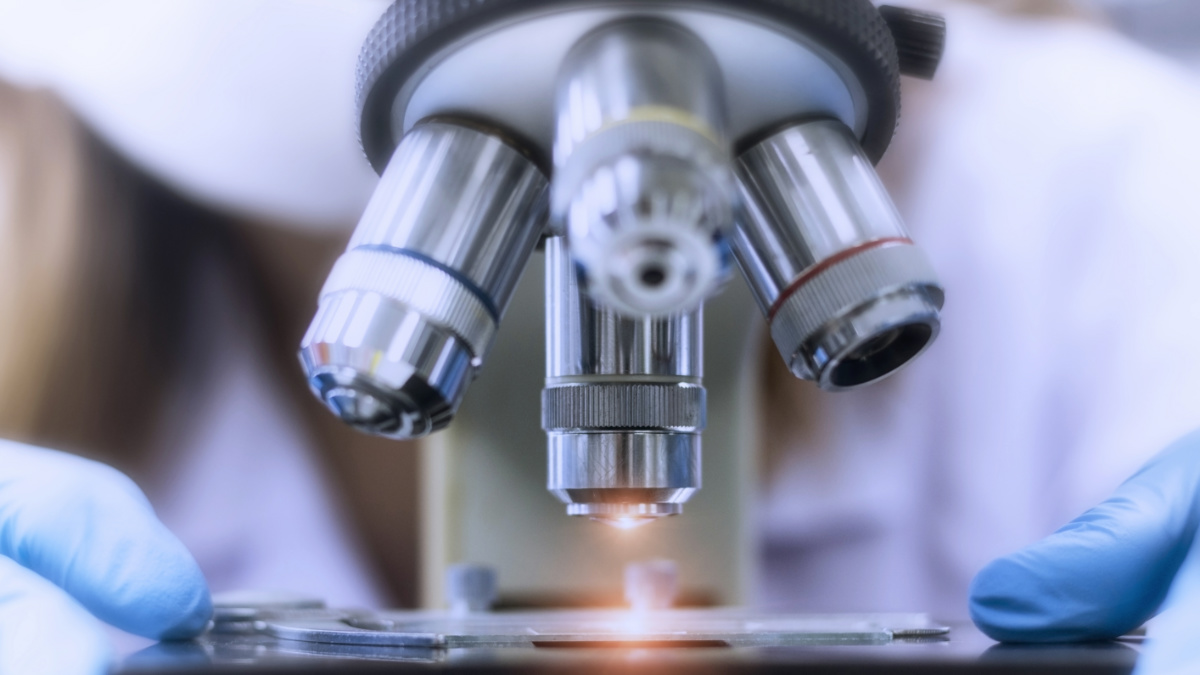Western Australia wanting to diversity beyond resources and become a global leader in health and medical life sciences
Cook Government to invest $16m into driving a connected and innovative ecosystem for WA’s health and medical research sector
Tissue regeneration and repair company Orthocell among several ASX biotechs with proud ties to Western Australia
The WA Government is looking to foster industries beyond mining in a bid to diversify its resources-dependent economy, announcing fresh investment to tap into a font of medical and biotech knowledge for which it is less well known.
Health and medical life sciences presents an opportunity for WA, supported by its world-class universities, hospitals and medical research institutions.
WA science and medical research minister Stephen Dawson announced at the Future Health Research and Innovation Fund open day on Thursday a $16 million injection into the industry including five new FHRI programs and a $325,000 investment into an innovation hub for local innovators.
The Cook Government established the FHRI Fund in 2020, which is backed by the state’s ~$1.8bn sovereign wealth fund.
“Since the Fund was established in 2020, approximately $173 million in grants has been awarded to 598 recipients to support health and medical research and innovation in WA,” Dawson says.
“Over the next four years a further $247 million is available to continue funding more innovative programs and initiatives.”
On Thursday Dawson also launched the start of new WA Clinical Trials Roadmap aimed at setting the direction for the quality and capacity for clinical trials in WA and to guide FHRI Fund investments.
“By fostering innovation and supporting new and cutting-edge research, we aim to attract even more top talent and solidify our position as a global leader in scientific discovery,” he says.
Read Beyond resources: WA aims to be medical and life sciences powerhouse
On the ASX there are several health and medical life sciences companies with ties to WA. Here’s some we’ve noticed.
Orthocell (ASX:OCC)
OCC is focused on advancing tissue regeneration and repair with its manufacturing facility based at its headquarters on the grounds of Murdoch University in Perth.
The facility is licensed by the Therapeutic Goods Administration to manufacture human tendon cells (tenocytes) and cartilage cells (chondrocytes) for the regeneration of damaged tendon and cartilage.
OCC’s facility is also certified to ISO 13485 for the manufacture of its CelGro collagen medical device that facilitates tissue repair and healing in a variety of orthopaedic, reconstructive, and surgical applications..
Through his association with the University of Western Australia, OCC co-founder and managing director Paul Anderson began collaborating with the company’s other co-founder and chief scientific officer Professor Ming Hao Zheng to develop novel regenerative medicine treatments.
The pair have a proven partnership, having previously commercialised cartilage repair technology and sold it to an American company with a market capitalisation of more than $1B.
Anderson and Zheng secured venture capital from a West Australian VC firm and non-dilutive funding from the State Government, listing on the ASX in 2014.
OCC now has a high profile board including plastic surgeon and burns specialist Professor Fiona Wood, renowned for her development of spray-on skin and former Federal Opposition Leader, US ambassador and WA Governor Kim Beazley.
The company has three approved products it manufactures including:
Striate+ – a sterile, resorbable collagen membrane used for guided bone and tissue regeneration in dental applications. Available for sale in Australia, the US, UK and EU.
Remplir is a collagen scaffold used in peripheral nerve repair, approved for sale in Australia and reimbursed within private health care
OrthoACI or autologous chondrocyte implantation is used for the treatment of articular cartilage defects in the knee and ankle and is available in Australia.
OCC is equipped to manufacture, scale up and export products around the world.
“We’ve shown we can develop the technologies in Western Australia, translate them into the clinic and have these products approved by international regulatory bodies,” Anderson says.
OCC is also one of the first companies in Australia to get MDR approval in Europe, which is intended to improve the safety and performance of medical devices in the region.
“They’ve changed the medical device regulations in Europe and made it a whole lot harder to get approval but we’ve already got that for our first product,” he says.
“That’s a testament to the quality of our data, quality of regulatory submissions and quality of our manufacturing capabilities.”
Argenica Therapeutics (ASX:AGN)
The brain injury-focused clinical-stage biotech is a spin-out from the University of WA and Perth-based The Perron Institute for Neurological and Translational Science and is developing its lead drug candidate ARG-007 designed to protect brain cells from injury after a stroke and other neurological conditions.
AGN is currently conducting a Phase 2 clinical trial recruiting 92 patients who have suffered an acute ischaemic stroke in 10 hospitals across Australia using ARG-007, which is a cationic, arginine-rich peptide with neuroprotective properties.
AGN CEO and managing director Dr Liz Dallimore says nervous system disorders are the biggest cause of poor health globally and currently there are no marketed safe, early intervention therapeutics capable of protecting the brain from damage following stroke.
“Argenica is one of the furthest progressed clinical drug development companies globally focused on neuroprotection in this indication,” she says.
“ARG-007 has amassed a huge amount of preclinical data scientifically validating the efficacy, safety and mechanism of action of the drug.
“Our chief scientific officer has over 25 peer reviewed publications, as well as the Phase 1 clinical trial data, derisking ARG-007 significantly.”
Dallimore says AGN feels well-supported on its growth journey in Western Australia.
“As a West Australian company we are fortunate to have access not only to state of the art facilities and talent in Perth to conduct our research, but access to non-dilutive funding from both the WA State Govt as well as philanthropic donors,” she says.
“It’s a thriving biotech scene here and we’re excited to be a part of it.”
In March the US FDA granted ARG-007 a Rare Pediatric Disease Designation (RPDD) for the treatment of Hypoxic Ischaemic Encephalopathy (HIE) in newborn term infants.
HIE occurs when the brain does not receive enough oxygen or blood flow for a period of time and may occur at any time prior to labour, during labour and delivery, or immediately following delivery. There are currently no therapeutic drugs available to treat the devastating condition.
PYC Therapeutics (ASX:PYC)
PYC’s discovery and laboratory operations are located in Perth, while its clinical operations are based in San Francisco in the US.
The biotech is pioneering a new generation of RNA therapeutics using its proprietary library of naturally derived cell-penetrating peptides to overcome the major challenges of current genetic medicines.
The company believes its peptide-conjugated phosphorodiamidate morpholino oligomer (PPMO) technology enables a safer and more effective RNA therapeutic to address underlying drivers of various genetic diseases that currently have no treatment solutions.
PYC focuses on monogenic indications, which involve or are controlled by a single gene, and says these have the highest likelihood of approval from clinical trials to market.
The company notes that studies have shown monogenic diseases have a five times greater probability of achieving market entry compared to the industry average.
PYC says it targets diseases with no current treatment options for patients, potentially allow for regulatory approval after two clinical trials (instead of the usual three), resulting in a faster path to providing life-changing treatments.
The company is targeting four indications including:
Retinitis Pigmentosa type 11 (RP11)
Autosomal Dominant Optic Atrophy (ADOA)
Autosomal Dominant Polycystic Kidney Disease (ADPKD)
Phelan-McDermid Syndrome (PMS)
PYC recently announced it had started a multiple ascending dose (MAD) study to evaluate the safety and efficacy profile of its investigational drug candidate VP-001 designed for patients with the blinding eye disease Retinitis Pigmentosa type 11 (RP11).
The company recently released positive early stage efficacy and safety data from the single ascending dose clinical study.
At Stockhead, we tell it like it is. While Orthocell is a Stockhead advertiser, the company did not sponsor this article.
The post Beyond Resources Part 2: ASX companies driving WA’s medical and life sciences sector appeared first on Stockhead.






















